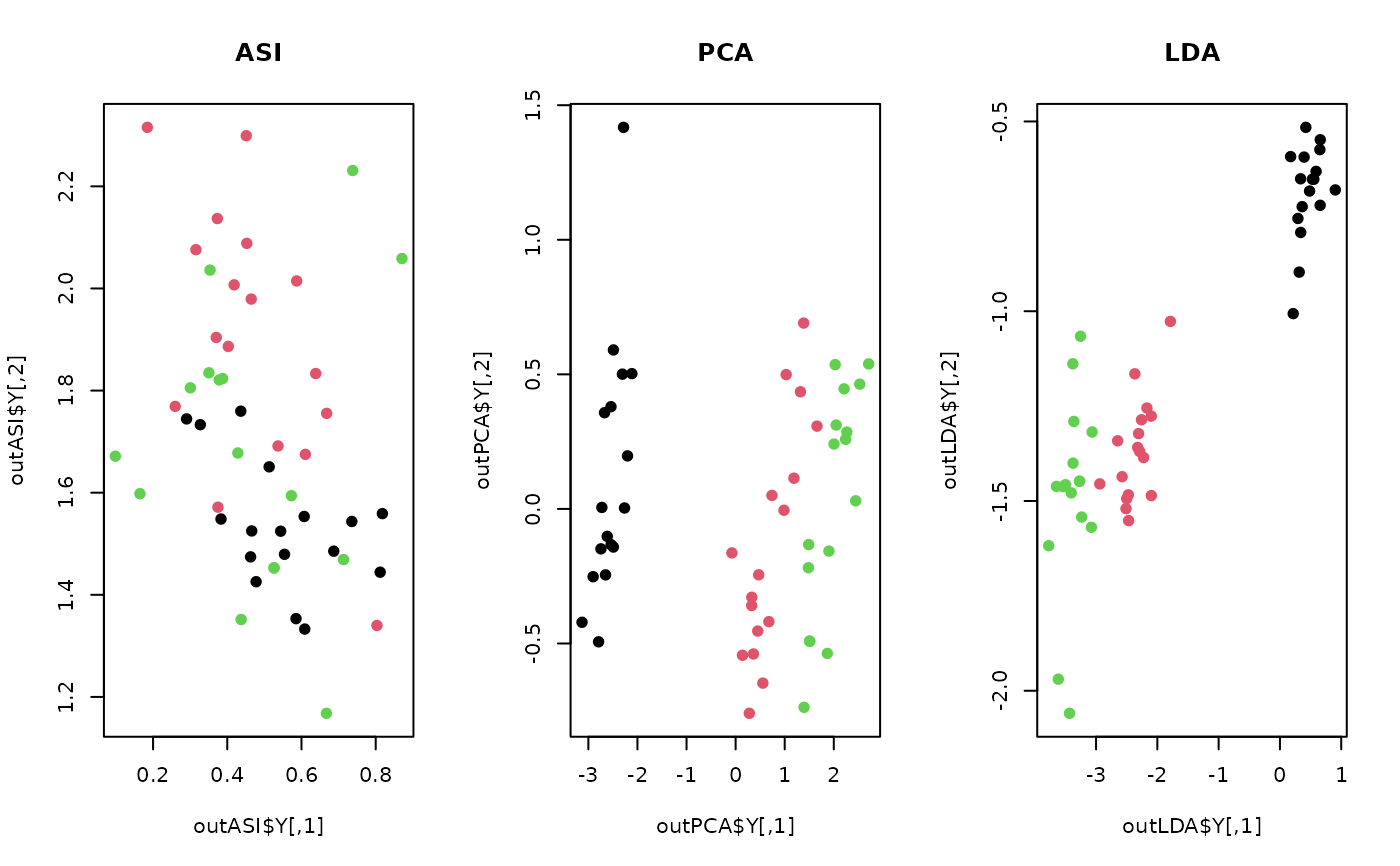Adaptive Subspace Iteration (ASI) iteratively finds the best subspace to perform data clustering. It can be regarded as one of remedies for clustering in high dimensional space. Eigenvectors of a within-cluster scatter matrix are used as basis of projection.
do.asi(X, ndim = 2, ...)Arguments
- X
an \((n\times p)\) matrix or data frame whose rows are observations.
- ndim
an integer-valued target dimension.
- ...
extra parameters including
- maxiter
maximum number of iterations (default: 100).
- abstol
absolute tolerance stopping criterion (default: 1e-8).
Value
a named Rdimtools S3 object containing
- Y
an \((n\times ndim)\) matrix whose rows are embedded observations.
- projection
a \((p\times ndim)\) whose columns are basis for projection.
- algorithm
name of the algorithm.
References
Li T, Ma S, Ogihara M (2004). “Document Clustering via Adaptive Subspace Iteration.” In Proceedings of the 27th Annual International ACM SIGIR Conference on Research and Development in Information Retrieval, 218.
See also
Examples
# \donttest{
## use iris data
data(iris, package="Rdimtools")
set.seed(100)
subid = sample(1:150, 50)
X = as.matrix(iris[subid,1:4])
label = as.factor(iris[subid,5])
## compare ASI with other methods
outASI = do.asi(X)
outPCA = do.pca(X)
outLDA = do.lda(X, label)
## visualize
opar <- par(no.readonly=TRUE)
par(mfrow=c(1,3))
plot(outASI$Y, pch=19, col=label, main="ASI")
plot(outPCA$Y, pch=19, col=label, main="PCA")
plot(outLDA$Y, pch=19, col=label, main="LDA")
 par(opar)
# }
par(opar)
# }